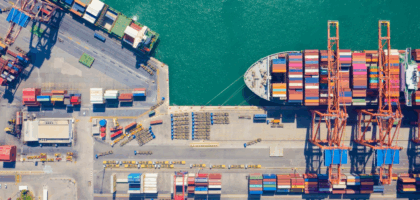International shipping is like a complicated relationship: there is a beginning, a lot of complex, moving parts in the middle, and an end. Sounds crazy, but anyone who has shipped internationally can attest.
Moving freight globally can be daunting, especially if you’ve never done it before. Even seasoned shippers still run into obstacles and have pending questions. You can thank the everchanging regulations and compliance rules for this. That’s why having your valuable freight handled and transported by an experienced freight forwarder can make all the difference for your business—and bottom line.
So, if international shipping is so fluid, what remains constant? The importance of getting these three factors right on your global shipments, every time.
Valuation
What do we mean by valuation? We are talking about customs valuation. This refers to the process of putting a monetary value to the goods you are importing. This valuation is then used as the basis for calculating customs duties and taxes that will need to paid by the importer to release the freight. Assigning a value on your goods is also beneficial in applying tariff preferences, collecting taxes, and controlling measurable import constraints.
How do you determine valuation? There are several ways to do this, but the most common method is to use the “transaction value.” This is the price actually paid or payable for the goods when sold for export to the country of importation, with certain adjustments. Virtually all countries accept the transaction value as the appropriate amount to declare upon import.
Other methods of determining customs valuation include:
- The transaction value of identical goods;
- The transaction value of similar goods;
- The deductive value method;
- The computed value method; and
- The deductive method (the “fallback” method).
Learn more in-depth about custom valuations.
Classification
Harmonized System Codes—also known as HS Codes—are a crucial piece to importing and exporting goods. These 6-10 digit Harmonized Tariff Codes serve two main purposes, aside from helping goods clear through customs: they identify products being imported or exported through a country’s borders and they classify and categorize products in a global system utilized for customs clearance purposes.
Prior to moving the freight, shippers need to assign an HS code to their goods. If you move forward without doing so, it could cause serious issues that could be costly, harmful to both parties’ core businesses, and damaging to one’s reputation. When HS codes are not assigned properly or at all, it could affect the:
- Duty Rate – Duty rates are closely associated with HS codes, and by misassigning or not assigning an HS code at all, you could end up paying a lot more in import duty, or not pay import duty at all. Using the wrong HS code can also cause you or your business to be liable for penalties and fines even after the goods have been cleared by customs.
- Importer Security Filing (10+2) – One of the most effective ways to comply with ISF requirements is to provide the correct HS code within the Purchase Order (PO) for the importer.
- Transit Time and Costs – When you don’t classify a shipment correctly or identify the commodity, you risk delaying your goods and could face possible storage charges until its resolved. These charges could rack up and affect your overall profitability and reputation.
- Compliance – Shippers can risk regulatory intervention when not assigning HS codes properly. In addition to the above time and cost impacts, you could also be fined for providing inaccurate information.
Country of Origin
The country of origin of an imported product is defined in U.S. law and customs regulations as the “country of manufacture, production, or growth of any article of foreign origin entering customs territory of the United States.” The Rules of Origin (ROO) determine the country of origin of an imported product and are a significant part of international trade policy because they are needed to properly assess tariffs, enforce trade remedies (such as antidumping and countervailing duties) or quantitative restrictions (tariff quotas), and statistical purposes.
Determining the country of origin can be straightforward, as long as the parts of the product are manufactured and assembled in one country. However, in today’s global trading environment, that is often not the case, and defining the origin is much more complex.
U.S. Customs and Border Protection (CBP) uses non-preferential ROO to determine the origin of goods imported from countries with which the U.S. has most-favored-nation (MFNs) status. CBP uses “substantial transformation” as the key factor in determining the country of origin, which basically means the country in which the product was last significantly altered prior to shipping.
International trade rules and global shipping regulations are always changing. By understanding the importance of these three factors, you will be equipped with basics of what you need to ensure is correct prior to importing or exporting your valuable goods. With the complexities involved with global logistics, consult with the international operations experts at ICAT Logistics. We help with these types of avoidable mistakes so you can focus on your business rather than the intricate details of shipping your freight.
Resources:
- How to Determine Customs Value for Duty (Trans American)
- Declared Value for International Courier Shipments (Jet Worldwide)
- The Importance of HS Codes When Importing or Exporting Goods (More Than Shipping)
- How to Find HS Codes and Calculate Import Duties and Taxes (IncoDocs)
- International Trade: Rules of Origin (FAS)



